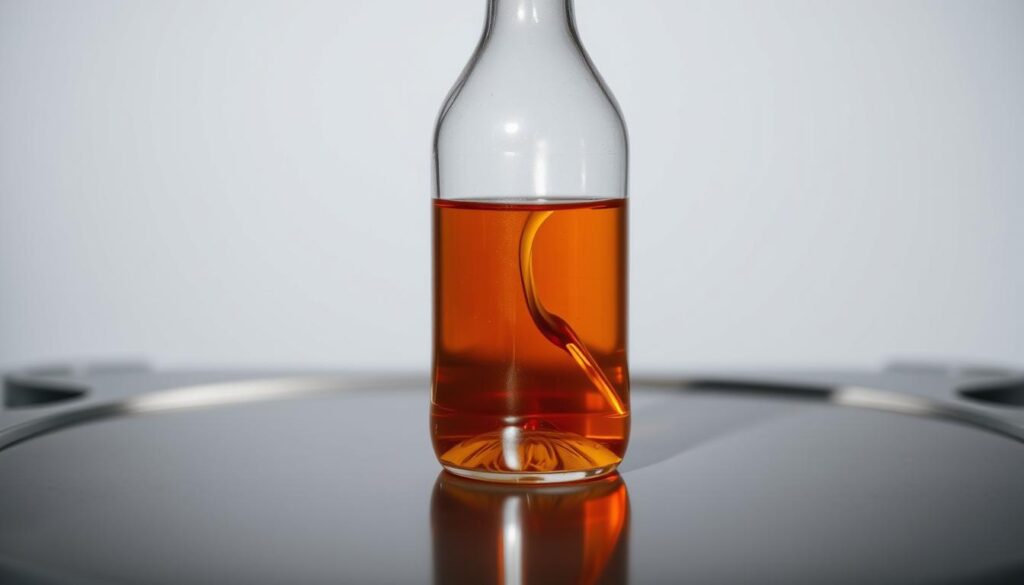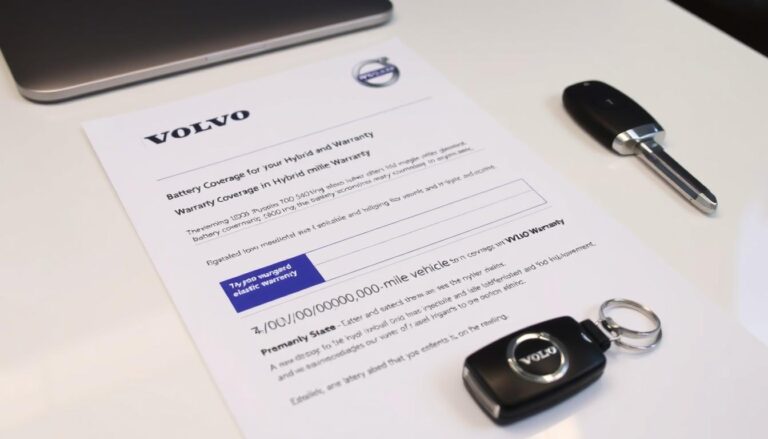Understanding service pricing helps owners plan routine maintenance without surprises. Effective stopping relies on the hydraulic medium that sends pedal force to calipers. If that hydraulic medium is weakened by heat or moisture, performance drops and failures may follow.
Brake fluid is hygroscopic and soaks up moisture through hoses and seals. Over several years this lowers the boiling point and can give a soft, spongy pedal feel. Many automakers suggest replacing the fluid every two to three years per the owner manual.
National price ranges for a professional service typically sit between $70 and $120 at general shops. Luxury-brand premiums and complex ABS parts can push a full procedure above $250. A complete job should include inspection, replacement, and bleeding to meet OEM specs.
Key Takeaways
- Hydraulic medium health is vital for safe stopping and steady braking.
- Expect routine service every two to three years per the owner manual.
- Basic service often costs $70–$120; luxury or complex systems may exceed $250.
- Quality service includes inspection, fluid swap, and proper bleeding to OEM specs.
- Compare dealer and independent shop options to balance warranty needs and price.
Volvo Brake Fluid Change Cost: How Much You Can Expect to Pay
Routine hydraulic service quotes vary widely across shops and vehicle classes.
National price range today: most independent shops quote between $70 and $120 for a standard brake fluid service on mainstream vehicles. Luxury models and systems with advanced ABS components often push the total above $250 due to longer labor and special procedures.
Dealer benchmark and independent options
Dealerships typically charge more but use brand-approved materials and diagnostics. A dealer example lists a starting price of $165.00, with model-year variation and fees for taxes or hazardous-waste disposal.
DIY perspective
Buying DOT-spec fluid runs roughly $6–$20 per bottle. If you already own bleeding tools, out-of-pocket expense is low. New tools and kits add about $60–$120.
Change versus full flush
A basic fluid change replaces most old fluid. A full flush uses pressure bleeding to purge lines, the master cylinder, calipers, and hoses, and generally costs more but gives a fuller system reset.
| Service Type | Typical Shop Price | Dealer Benchmark | DIY Cost |
|---|---|---|---|
| Standard fluid change | $70–$120 | $165 (starting) | $6–$20 (fluid only) |
| Luxury/special systems | $150–$250+ | $165+ (model dependent) | $60–$120 (tools + fluid) |
| Full flush (pressure bleed) | $120–$250 | $180+ (complex systems) | $80–$150 (pressure kit) |
| Notes | Includes inspection & bleeding | May exclude tax & disposal | Risk: air in lines, wrong spec |
What Drives the Price: Vehicle, Fluid Type, and Service Provider Choices
Complexity, chemistry, and shop selection shape the time and parts needed for a proper service. Modern cars use ABS modules, multiple caliper bleeders, and compact master cylinder layouts that add labor. Tight routing of brake lines and rusted bleeders also raise shop time and the final bill.
Your vehicle’s braking system
Systems with extra components take longer to service. Technicians must clear ABS passages, cycle caliper pistons, and access hidden hoses. Stuck bleeders or damaged components can require replacement before a complete fluid change or fluid flush is effective.

Fluid chemistry and boiling point
Glycol-based DOT 3, DOT 4, and DOT 5.1 absorb water over time. That moisture lowers the boiling point and can produce air bubbles under heat, which softens the pedal and cuts stopping performance. Silicone DOT 5 is hydrophobic and usually incompatible with mixed systems.
Dealer vs. independent shops
Dealers use brand procedures and branded parts; independents may offer lower rates and flexible scheduling. Either choice needs the right tools to flush lines, purge the master cylinder, and restore OEM specs.
“Replacing old fluid and fully bleeding the system protects components and keeps stopping performance at design levels.”
| Factor | Impact on Price | Why it matters |
|---|---|---|
| Vehicle complexity | Low–High | ABS modules and tight access add labor |
| Fluid type | Low–Medium | DOT spec and boiling point affect part cost |
| Shop choice | Medium | Dealer procedures vs. independent hourly rates |
What a Proper Volvo Brake Fluid Service Includes
A complete service follows a clear, repeatable checklist that protects stopping performance and limits future repairs.
Inspect the reservoir and lines first. Start with a visual check of the fluid reservoir for color and clarity. Dark or murky fluid signals contamination. Low level may indicate pad wear or a leak that needs attention before any fluid change.
Check hoses, calipers, and fittings. Inspect brake lines and flexible hoses for cracking, wet spots, or corrosion. Examine caliper bleeders and fittings for seized screws or surface rust that could expand the job into component replacement.
Flush, replace, and bleed properly. Confirm the correct DOT specification, then drain old fluid and use a pressure bleeder if available. Push fresh brake fluid through lines, hoses, calipers, and the master cylinder until the fluid runs clear and no air remains.
Finish with verification. Verify boiling point protection by ensuring the new fluid meets OEM specs. Perform a leak check, top off the fluid reservoir, and document the service for the vehicle’s maintenance records.

| Step | Action | Why it matters |
|---|---|---|
| Inspect reservoir | Check color, level | Detect contamination or leaks early |
| Assess lines & components | Examine hoses, calipers, bleeders | Find corrosion and stuck fittings |
| Flush & bleed | Use correct DOT fluid and pressure bleed | Remove old fluid, purge air, restore performance |
Conclusion
Keeping the hydraulic medium fresh is one of the simplest ways to maintain consistent stopping performance.
Many manufacturers advise service every two to three years in the owner manual. Watch for a soft or spongy brake pedal, dark fluid in the reservoir, or warning lights. These signs often mean it’s time for attention.
Typical shop pricing runs about $70–$120, while dealer work may start higher (around $165) depending on model and labor. Ask whether a provider offers a standard change or a full flush, and confirm they use the correct DOT spec — dot 5.1 where required — to protect boiling point margins and lines.
Budget routine service, monitor symptoms between visits, and choose a technician who follows a full bleeding procedure. Small, proactive steps help keep cars safe and preserve component life.
FAQ
National price range today: typical shop costs, luxury premiums, and dealership vs. independent?
National rates vary. Independent shops usually charge less than dealerships; expect lower labor rates but similar parts pricing. Luxury models often carry higher labor times and specialty fluids, which raises the invoice. Typical shop quotes depend on region, labor hour rates, and the service type (simple drain and refill versus full flush).
Dealer benchmark: dealer Brake Fluid Service starting at 5 — are prices fixed by model/year?
Dealers set baseline prices, but final numbers fluctuate by model and production year. Older sedans and crossovers may use standard DOT-rated liquids, while performance or plug-in hybrids might need higher-rated products or extra procedures, adding to the total. Always confirm with the local service advisor for your exact model.
DIY perspective: what are fluid price, tools, and risks vs. savings?
Purchasing DOT-rated liquid and basic tools can cost a fraction of shop labor. Savings depend on your skill and time. Risks include introducing air into the system, contaminating hydraulic components, or using an incompatible product that damages seals. If you lack a bleed kit or the right DOT specification, professional service is safer.
Change vs. flush: what are you paying for and when does a full flush cost more?
A simple change replaces some fluid and tops off the reservoir. A full flush cycles fresh fluid through all lines, removes moisture, and requires more fluid and labor. A flush costs more because it includes systematic bleeding of each caliper and verification of system integrity, which takes additional time and materials.
How do vehicle features like ABS, calipers, hoses, and master cylinder affect service complexity?
Advanced systems add bleed points and sensors that require careful handling. ABS modules may need special bleed procedures. Worn hoses or corroded lines can complicate service and extend labor time, increasing the final price. Technicians must follow OEM procedures to avoid damage.
What are the differences between DOT 3, DOT 4, DOT 5.1 and DOT 5 regarding compatibility and performance?
DOT 3 and DOT 4 are glycol-based and commonly used in many passenger models. DOT 5.1 is glycol-based like DOT 4 but has a higher boiling point; it suits high-performance applications. DOT 5 is silicone-based and incompatible with glycol fluids; it’s rare in factory systems and can cause seal issues if mixed. Always use the specification in the owner manual.
Dealer expertise vs. independent shops: what should owners consider?
Dealers offer technicians trained on factory procedures and access to OEM parts and software. Independents may offer lower labor rates and personalized service. Choose a provider with credentials, good reviews, and experience with your car’s systems. Prioritize shops that follow OEM fluid specs and testing protocols.
When should service be scheduled: owner’s manual intervals, spongy pedal, dark fluid, or warning lights?
Follow the manufacturer’s recommended interval in the owner manual as primary guidance. Immediate service is advised for a soft or spongy pedal, dark or contaminated fluid, or brake-system warning lights. Moisture contamination lowers boiling point over time and affects performance, so don’t delay when symptoms appear.
What does a proper fluid service include when inspecting reservoir, lines, and components for moisture and corrosion?
A full service inspects the reservoir cap and seals, checks line and hose condition, reviews calipers and master cylinder for leaks or corrosion, and tests fluid moisture content or color. Technicians should document findings and recommend repairs if corrosion or damaged hoses are present.
What are the steps for replacing old fluid, bleeding air, and meeting OEM specs for the braking system?
The technician drains or flushes old fluid, installs the correct DOT specification, bleeds each wheel to remove air, and verifies pedal firmness and system pressure. Post-service checks include test driving to confirm performance. Proper disposal of old fluid and use of clean tools are part of meeting OEM standards.



